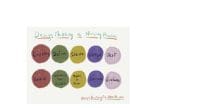The notion of culture of safety implies not merely the absence harm, injury or preventable death, but also the unmeasurable feeling that one is in good hands, even in bad times. The romantic idea (often revived during Nurses’ Week) is that of Florence Nightingale doing her nightly rounds, reassuring the soldiers, while beneath their blankets, incurable infections and pain lurk. Somehow, the soldier-patients felt reassured and safe, though countless of them did not survive to thank Nightingale and her team for bringing in a culture of safety, simply because there was a competent nurse in the house. Then, as now, a good part of the safety climate is the reassuring feeling that comes in knowing that the system works, and its leaders and employees are not just simply working the system.
In a crisis mode, the standard principles of quality and safety are suspended. The routine nursing activities that impact patient safety and patient experience satisfaction, such as hourly rounding, unrestricted visiting hours, bedside handoff, teach-back, and many others, are put on hold. As with any practice initiatives, it takes years for these seemingly mundane safety measures to become standard of practice. Is it possible that the pandemic may have caused a ripple of safety set-backs at the bedside even as it has accelerated public health safety?
Did you report it?
A cross-sectional survey-based study done in the United Kingdom to assess institutional safety culture during the COVID-19 pandemic in 2020 reported that the rate of incident reporting reduced following the onset of the pandemic. Healthcare workers were less likely to fill-in an incident report during the peak of the pandemic compared with baseline pre-pandemic data. Given that incident reports are critical in quality improvement and risk management, it is possible that their noticeable decline during the pandemic could deny the safety stakeholders of very important information. While it is true that frontline workers and leaders may have done countless huddles on the fly during the tidal wave of COVID-19 cases, recall can be problematic and unreliable, past a certain time after the event. Incident reports are the annotated confidential diary entries of the culture of safety, or lack of it; they are vital in root cause analysis. Another notable finding of the study is that, in this pandemic, nurses demonstrated lower Safety Attitudes Questionnaire (SAQ) scores compared with doctors and other clinical staff. The SAQ is one of the most commonly used tools for measuring safety climate. So, now we have a psychometric proof of frontline nurses’ stress and job dissatisfaction during the pandemic.
Huddle and muddle
The National Academy of Medicine’s To Err Is Human: Building a Safer Health System report in 2000 gave American hospitals the vogue term huddle, now entrenched in patient safety lingo. The Institute for Healthcare Improvement (IHI) defines huddle as a short (less than 10 minutes), stand-up meeting that is typically used once at the start of each workday in a clinical setting. While there are plenty of anecdotal reports of successful huddle programs, a recent systematic review analyzing the impact of multidisciplinary team huddles on patient outcomes gave the noncommittal verdict that “additional rigorous research is needed” to fully comprehend its true and enduring value.
A friend of mine told me that at the peak of the first wave of the pandemic, they huddled until they were muddled. I wonder if the patient safety scientists are looking into huddle fatigue? Is it possible that a good thing, done too often, loses its meaning? One cannot huddle well if one is just muddling through. And this is where understanding the human factors of patient safety (workers’ trust in the system), and implementing a sustainable targeted support comes in.
Too new to be safe?
I became a nurse at age of 19. By the time I was 22, I was working in a 400-bed hospital in New York City. One night, a patient expressed his reservations about my competence based on the idea that I “looked too young.” I didn’t think much about this, but sometimes I wonder if the patient’s doubt, sublimated by saying I didn’t look old enough to be a nurse, was a symptom of general mistrust? Of the healthcare system? Of novice providers? (Think of the “July Effect”, when newly minted medical residents descend upon teaching hospitals, with little experience).
It is possible that some nurses may hold a certain bias that new grads may be more prone to lapses in safe practices, not because they think of them as inexperienced and unskilled, but because most of us have gone through nursing school fearing the ultimate calamity of killing a patient by omission or commission. Fear is never a good impetus to enhance the culture of safety; it leads to mistrust and internalized self-doubt. This insecure feeling throws conscientious nurses into silence and destabilizes their confidence, ultimately undermining the culture of safety. As a nurse educator, I’d like to think that I role model well-thought clinical judgment in my teachings and focus on cultivating professional flourishing and mutual trust; not instilling fear among students. The public trusts us. If we are to remain the chosen guardians and defenders of patient safety, let us also trust one another — for good.
References
Denning M, Goh ET, Scott A, et al. What Has Been the Impact of Covid-19 on Safety Culture? A Case Study from a Large Metropolitan Healthcare Trust. Int J Environ Res Public Health. 2020;17(19):7034. Published 2020 Sep 25. doi:10.3390/ijerph17197034.
Franklin BJ, Gandhi TK, Bates DW, et al. Impact of multidisciplinary team huddles on patient safety: a systematic review and proposed taxonomy. BMJ Qual Saf. 2020;29(10):1-2. doi:10.1136/bmjqs-2019-009911
Fidelindo Lim is a clinical associate professor at New York University – Rory Meyers College of Nursing.


















